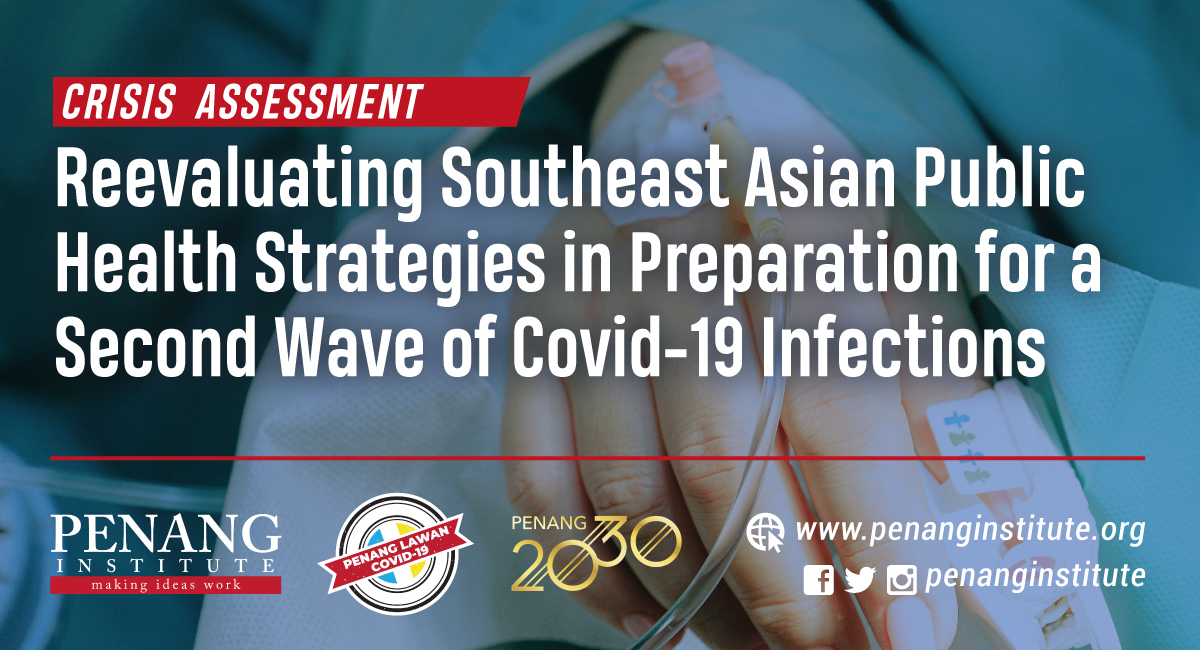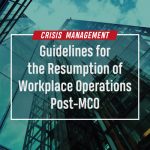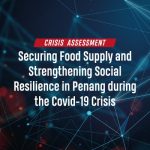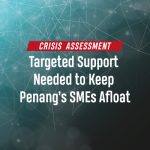EXECUTIVE SUMMARY
- Southeast Asian countries must deliberate upon their medium-term strategies to prepare for the possibility of a second surge of Covid-19 infections
- Governments in the region should reconsider how to allocate funding to invest in their healthcare systems, especially in terms of primary and universal healthcare coverages
- During a pandemic, governments should also facilitate and strengthen the decision-making privileges of health technocrats so that the right people are at the helm to make accurate assessments and propose sensible solutions
- In addition to existing laws enacted for the prevention and control of diseases, there is a need to table a necessary set of Temporary Measures Bills to minimise the economic impact of Covid-19 on countries
- Finally, sustainable solutions for handling all non-citizens have to be proposed and implemented as the health security of non-citizens is intertwined with that of citizens
INTRODUCTION
When China sneezes, the world catches a cold. This phrase is more literal now than ever during this ongoing Covid-19 pandemic that is ravaging the world. Even as countries in the East Asian region begin to ease restrictions imposed to curb the spread of the disease, the recent surge of Covid-19 cases in Beijing in June 2020 clearly suggests that a second wave of Covid-19 is no longer a case of “if” but “when”, and begs the question of how severe that may turn out to be.
In the medium-term (defined as the next 12 months), countries in Southeast Asia must reevaluate their strategies. This Crisis Assessment paper discusses some medium-term responses established by Southeast Asian nations to mitigate the risk of a second wave of Covid-19 infections.
It does not discuss short-term responses such as social distancing, targeted testing, contact tracing, border controls and the phased restart of public life as these have been well-explored in other publications and are already familiar concepts to most readers and observers. Suffice it to say that these short-term measures must persist. What is crucial now in the face of second-wave infections is that governments must find the right mix of public health measures to balance public lives and livelihoods.
Greater Investments in Healthcare
The Covid-19 pandemic presents a rare opportunity for many countries to rethink their national health systems and identify areas in need of improvement. For instance, the investments in public healthcare in countries like Singapore, Malaysia and Thailand has certainly paid off. Well-trained medical personnel and researchers as well as well-built facilities have played a critical role in the containment of Covid-19. The low mortality rate in these countries is also a testament to the quality of their healthcare systems. However, it is also clear that improvements can be made especially with regards to the disparity between urban and rural medical facilities, the stockpile of equipment needed for a pandemic, and more efficient ways to gather additional resources.
Conversely, the public healthcare in Indonesia and the Philippines is shown to be inadequate and subpar. The poor quality of health services and the lack of protection for the health and safety of medical personnel in these countries clearly illustrate the need for a robust national healthcare system.
As such, policy makers should review and discuss how best to allocate national funds to upgrade the healthcare systems in their countries. This includes training medical staff and upgrading necessary facilities, infrastructure and equipment. A resilient and inclusive health system must also take into account rural areas, which are often left out and neglected in the government’s plans for development and modernisation. As a result, many of the medical centres and hospitals in rural areas and city outskirts are old and in dire need of upgrade. At the very least, facilities and rapid response capacity have to be enhanced. These smaller medical facilities also need to be suitably staffed with employees trained to handle an epidemic or pandemic outbreak. Citizens who live in the outskirts deserve the same rights as those living in cities and should not be deprived of their right to good and reliable healthcare services.
The Focus on Public Health, Primary Care and Universal Health Coverage
The health systems of most Southeast Asian countries are increasingly focused on expensive hospital-based curative services delivered by specialists. In Malaysia for example, approximately 70% of the public healthcare budget is consumed by curative services and only 7% is allocated to preventive services (Ministry of Health, 2017).[1]
The first line of defense include public health practitioners (such as epidemiologists and contact tracers), community health clinics and primary care clinics which are involved in screening, triaging and educating the public. Meanwhile, the last line of the medical defense against Covid-19 are the tertiary hospitals. Strengthening primary care through visibly higher financial investments, the rapid building of physical infrastructure where needed and the re-assignment of staff to public health and primary care will help reduce the risk from second-wave Covid-19 infections.
The concept of Universal Health Coverage (or UHC) is not new. In basic terms, it means that all residents of a country should get the healthcare that they need when they need it without going bankrupt. Although Covid-19 is already highlighting the need for UHC in Southeast Asia, the rhetoric is not yet internalised. However, countries that are serious in their fight against Covid-19, especially under the threat of a second wave, need to consider the importance of having UHC for their citizens. The lack of UHC might mean that less-privileged citizens who contract Covid-19 might not receive the appropriate healthcare needed or are bankrupted in the process of seeking healthcare, resulting in consequences that extend beyond just health concerns.
Prepare Designated Places as Isolation and Treatment Centres
The case and death toll for Southeast Asian countries in general has been manageable on an absolute and per capita basis. This translates to a sustainable bed utilisation rate across Southeast Asia without overwhelming or overburdening health systems as was experienced in Europe and North America. However, this assertion must be approached with some caution, since data remain sparse. Testing rates may have to improve, as should government transparency.
Due to the high infection rate of Covid-19, countries would do well to prepare for a possible second wave of infections by setting up designated places as isolation and treatment centres. For instance, as cases increased in Singapore, the Singaporean government had to race against time to build a large temporary structure with beds and other necessities to house the growing number of patients. In Malaysia, a large exhibition hall in Serdang in the outskirts of KL was converted into a temporary hospital as a part of its surge planning.
There are two ways popularly adopted by governments to set up emergency isolation centres beyond those in hospitals. One is to identify facilities that fulfill the necessary requirements needed in an emergency isolation centre such as town halls, stadiums, unused hostels or dormitories. The second is to put protocols in place on how and where to build temporary isolation centres as well as devise a list of necessary equipment to be placed in these temporary isolation centres.
Governments should not take their role in setting up designated isolation and treatment centres lightly, as this is arguably more important than surge manufacturing of consumables (like reagents for test kits) and personal protective equipment (such as masks and gloves). The supplies of such items have been replenished as factories have worked hard to assure adequate supplies, so much so that Malaysia was able to donate a million masks to Palestine,[2] Vietnam has also donated face masks to Germany, France and the United States.[3]
Strengthen the Decision-Making Privileges of Health Technocrats
In the Covid-19 outbreak, national leaders are challenged with the daunting task of striking a balance between protecting lives and saving the economy. This trade-off is made even more complicated when decisions are encumbered by political and economic calculations. As a result, we have witnessed the reluctance of some national leaders in making unpopular decisions such as refusing to acknowledge the severity of the outbreak in order to protect their economy. However, regardless of how legitimate these reservations are, public health should always trump economic concern because while an economic downturn can recover, lost lives cannot be resurrected.
Thus, political leaders should always prioritise the advice of their medical and health experts over any economic and political concerns in times of pandemics. It is also extremely important to grant the Health Ministry adequate decision-making privileges and rely on their advice. After all, medical and health experts are trained to assess health risks and propose sensible solutions which would minimise the likelihood of putting people’s lives and safety in jeopardy. Therefore, a part of the government’s duty is to ensure that the right technocrats are put in charge to allow independent decision-making, reduce the risk of accusations of political bias and improve the technical expertise of the decisions made. As health technocrats are more likely to be impartial to politics and are less likely to make decisions influenced by the agenda of winning votes, it will also facilitate better mobilisation and allocation of resources.
During the first wave of Covid-19, we have witnessed the professionalism, competence and expertise of the Health Ministries of Southeast Asian countries such as Malaysia, Singapore, Thailand and Vietnam. These countries’ success in their handling of the outbreak is in large part due to an implicit trust in their Health Ministries and the cooperation given by the public. The same attitude is crucial in the fight against a second wave of Covid-19.
Propose or Amend Laws for the Prevention and Control of Diseases, and the Temporary Measures Bill
In January 2020, the Chinese government was the first nation in modern history to take the unprecedented step in locking down an entire city (Wuhan) and province (Hubei). This drastic measure was beyond even the guidelines of the World Health Organisation (WHO) but has since been proven to be necessary to contain the spread of Covid-19. This is merely one example of how public health measures intersect with the need for clear and unambiguous laws to allow these measures to be implemented. Other examples include movement tracking apps and contact tracing.
While there are legitimate concerns that such a measure does not cohere to democratic values and there are fears that it can be abused by the authorities to impose draconian laws, in times of crisis, one should not interpret such efforts with binary lenses; in this case whether it is democratic or un-democratic. Nevertheless, these concerns are still valid and to circumvent that, laws and provisions can be drafted to safeguard public health without compromising democratic values. For instance, South Korea, Singapore and Malaysia have legislations relating to the prevention and control of infectious diseases which can be invoked in the time of a pandemic. These Acts stipulate the powers and authorities of the government and place necessary limitations on how far the government can exercise their control. Policy makers can always review and debate these Acts and amend them wherever necessary to prevent abuses of law.
While thinking ahead about what can be done to protect public health, middle-term measures are also needed to mitigate the economic impact of Covid-19. To effectively prepare for that, Southeast Asian governments should begin to formulate a necessary set of Temporary Measures Bills to provide some economic relief especially for business operators and micro, small and medium entrepreneurs.
The past several months of fighting the first wave of Covid-19 has been a steep learning curve for many countries. Hopefully, it has also made the government and the public more amenable to a robust set of laws to prepare for a second wave of Covid-19.
Protecting Non-Citizens
Malaysia, Singapore and Thailand share one key demographic group among Southeast Asian nations: the presence of a significant number of non-citizens in their population. In general, non-citizens can be divided into four broad categories: documented migrants, undocumented migrants, refugees and asylum-seekers, and stateless persons. Apart from that, there are also non-citizens who fall under dependent visas or spousal visas, and permanent residents which include children. Non-citizens do not share similar healthcare privileges as citizens.
Non-citizens’ challenges stem from their legal statuses, differences in healthcare access and the range of government policies targeted at them. For example, documented migrants, especially the expats are likely able to afford medical services, but the same cannot be said for the undocumented migrants. Undocumented migrants will also probably be too afraid to seek for medical attention even if they are unwell. All these challenges require in-depth analysis and discussion that is beyond the scope of this paper.
Regardless, it is important to remember that the health of non-citizens, especially in Malaysia, Singapore and Thailand, is intimately bound with the health of all citizens. This is true even before considering their impact on the economy (both formal and informal), national security and domestic politics.
Therefore, it is clear that governments need to provide sustainable solutions to all non-citizens in Southeast Asian nations, especially in terms of access to healthcare, safe and hygienic housing, workers’ rights and risk education, if not for ethical and moral reasons, then for the health security of their own citizens.
It should also be noted that the influx of non-citizens in recent years have bred discontent, xenophobia and racist sentiments among local Malaysians and Singaporeans. This is further abetted with the use of social media, where rumors and malicious talk¬¬¬¬ spread unchallenged. We need to take note that a truly resilient society can only be built when its most vulnerable are treated with equal respect and care – after all, we are only as strong as our weakest link. Therefore, it is imperative that the health, rights and dignity of non-citizens are preserved and protected.
CONCLUSION
The fight against the Covid-19 pandemic will not end until a vaccine is found, mass-produced and distributed equitably. Until then, Southeast Asian nations must apply a broad set of medium-term policies to reduce the risk of second-wave infections and mitigate its effects when, not if, a second wave does come.
[1] Ministry of Health. 2017. “Annual Report.” Ministry of Health.
[2] New Straits Times. 2020. “Palestinian Embassy expresses appreciation to Malaysia for medical aid.” New Straits Times. 8 May. Accessed 21 June, 2020. https://www.nst.com.my/news/nation/2020/05/590957/palestinian-embassy-expresses-appreciation-malaysia-medical-aid.
[3] South China Morning Post. 2020. “Vietnam donates 1 million masks to Europe and Southeast Asia, challenging China’s monopoly on coronavirus diplomacy.” South China Morning Post. 10 April. Accessed 21 June, 2020. https://www.scmp.com/news/asia/southeast-asia/article/3079380/vietnam-donates-over-1-million-masks-europe-and-southeast
You might also like:
![Guidelines for the Resumption of Workplace Operations Post-MCO]()
Guidelines for the Resumption of Workplace Operations Post-MCO
![Securing Food Supply and Strengthening Social Resilience in Penang during the Covid-19 Crisis]()
Securing Food Supply and Strengthening Social Resilience in Penang during the Covid-19 Crisis
![Covid-19: Extensive Lifestyle Changes are on the Cards]()
Covid-19: Extensive Lifestyle Changes are on the Cards
![Targeted Support Needed to Keep Penang's SMEs Afloat]()
Targeted Support Needed to Keep Penang's SMEs Afloat
![Covid-19 Set to Aggravate Malaysia’s Skills Mismatch]()
Covid-19 Set to Aggravate Malaysia’s Skills Mismatch







